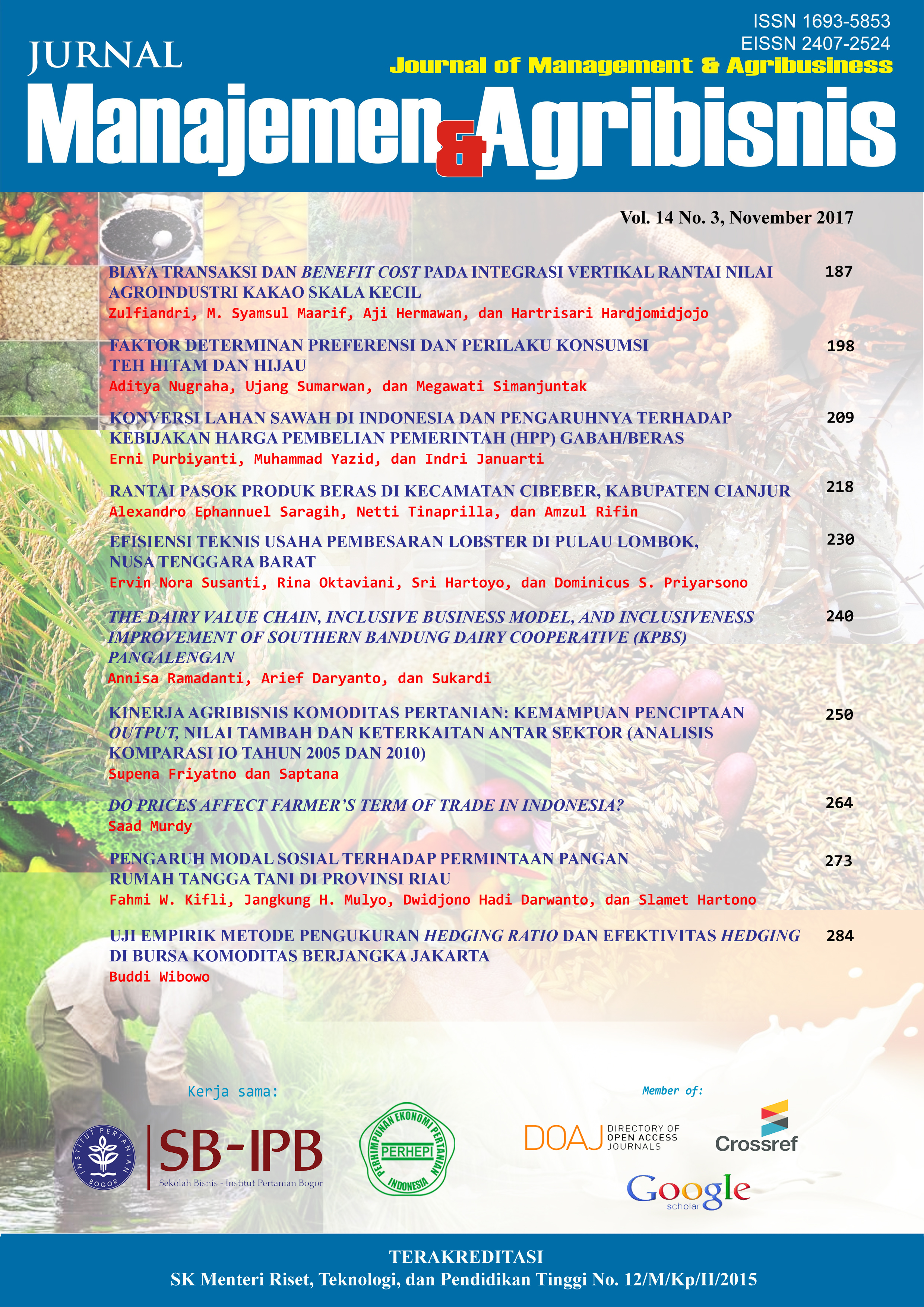Kinerja Agribisnis Komoditas Pertanian: Kemampuan Penciptaan Output, Nilai Tambah dan Keterkaitan Antar Sektor (Analisis Komparasi I-O Tahun 2005 dan 2010)
Abstract
In the perspective of agribusiness, the agricultural commodity has become an economic entity for the actors of businesses to develop the integration of products from upstream to downstream. This paper aimed to analyze any agricultural commodity that had grown into agribusiness commodities in the period 2005 and 2010. The methodology used was to conduct a comparative table of I-O in 2005 and 2010 to identify any agricultural commodity that had: (a) the capability in the creation of high economy through the creation of output; (b) the creation of high added value, and (c) the forward and backward relationships. Growing an agricultural commodity that has been cultivated, the higher the forward and backward linkages with other sectors. Similarly, when the ability of an agricultural commodity in creating added value is higher, the ability in creating economic value is also higher. The results showed that the groups of food commodities had lower capabilities as agricultural commodities compared with the groups of horticulture, plantation, and livestock commodities. The development of primary agricultural commodities into final products can enhance the role of agribusiness commodities. The implication is that the development of downstream industries for the commodities of food, horticulture, plantation and livestock is a strategic step in the creation of output, value added and linkages among the economic sectors.
Keywords: agribusiness, agricultural commodities, linkages between sectors, output, added value
Authors
Authors who publish with this journal agree to the following terms:
- Authors retain copyright and grant the journal right of first publication with the work simultaneously licensed under a Creative Commons Attribution License that allows others to share the work with an acknowledgement of the work's authorship and initial publication in this journal.
- Authors are able to enter into separate, additional contractual arrangements for the non-exclusive distribution of the journal's published version of the work (e.g., post it to an institutional repository or publish it in a book), with an acknowledgement of its initial publication in this journal.
- Authors are permitted and encouraged to post their work online (e.g., in institutional repositories or on their website) prior to and during the submission process, as it can lead to productive exchanges, as well as earlier and greater citation of published work (See The Effect of Open Access).

